Landscape Gardening in Hampstead: Transforming Outdoor Spaces
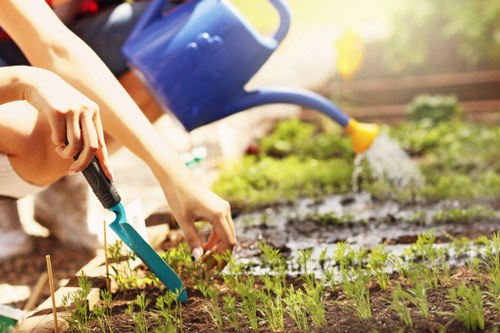
Introduction to Landscape Gardening
Landscape gardening in Hampstead offers a unique blend of natural beauty and architectural elegance. Nestled in one of London’s most picturesque neighborhoods, Hampstead provides the perfect canvas for creating stunning outdoor spaces that reflect both personal style and the area's rich heritage.
Whether you’re looking to redesign your existing garden or starting from scratch, understanding the principles of landscape gardening is essential. From selecting the right plants to designing functional spaces, every element plays a crucial role in achieving a harmonious and beautiful garden.
In this article, we will explore various aspects of landscape gardening in Hampstead, offering tips and insights to help you create a garden that not only enhances your home's aesthetic but also provides a peaceful retreat from the hustle and bustle of city life.
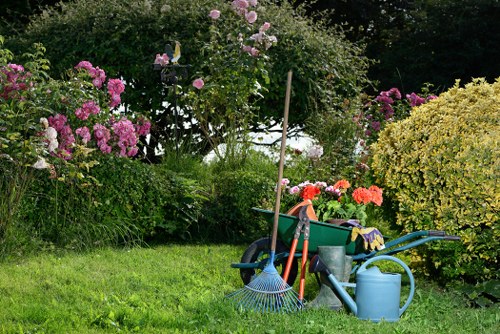
Understanding Hampstead’s Unique Climate and Soil
Climate Considerations
Hampstead enjoys a temperate climate, characterized by mild summers and cool winters. This climate is conducive to a wide range of plants, allowing for diverse garden designs. However, it’s important to consider seasonal variations when selecting plants to ensure they thrive throughout the year.
During the warmer months, plants that require ample sunlight and well-drained soil will flourish. Conversely, in the cooler months, incorporating evergreen plants and those with vibrant foliage can maintain the garden’s appeal even when growth slows.
Additionally, Hampstead’s occasional rainfall necessitates proper drainage solutions to prevent waterlogging and root rot. Incorporating features like rain gardens or raised beds can help manage excess water effectively.
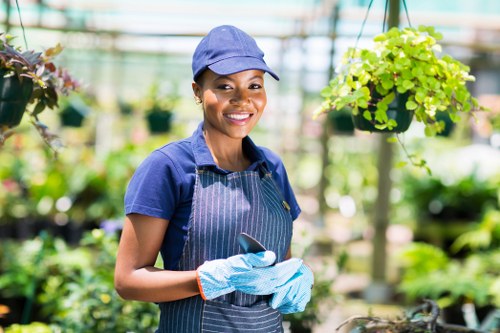
Design Principles for Landscape Gardening
Creating a Cohesive Design
A cohesive landscape design begins with a clear vision of what you want to achieve. Consider the overall layout, including pathways, seating areas, and focal points such as water features or sculptures.
Utilizing the principles of balance, symmetry, and proportion can help create a harmonious garden. For instance, pairing tall trees with shorter shrubs can add depth and dimension, while symmetrical arrangements can provide a sense of order and elegance.
Incorporating different textures and colors through plant selection also enhances the visual appeal. Mixing perennials with annuals, and combining various leaf shapes and sizes, can create an engaging and dynamic garden environment.
- Balance and symmetry
- Proportion and scale
- Texture and color variation
- Focal points and pathways
- Functional and aesthetic elements
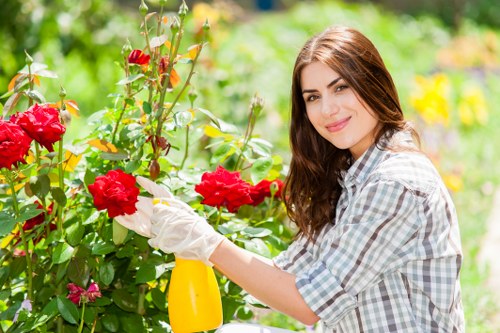
Selecting the Right Plants for Hampstead Gardens
Native vs. Exotic Plants
Choosing between native and exotic plants depends on your garden’s desired aesthetic and maintenance preferences. Native plants are well-adapted to Hampstead’s climate and soil conditions, often requiring less water and fewer fertilizers.
Exotic plants can add unique textures and colors, providing a distinctive look. However, they may require more care and attention to thrive. A balanced mix of both can offer the best of both worlds, creating a resilient and visually striking garden.
Consider factors such as growth habit, bloom time, and foliage when selecting plants. This ensures a garden that remains vibrant and diverse throughout the year.
- Assess climate adaptability
- Consider maintenance requirements
- Evaluate growth habits and sizes
- Plan for year-round interest
- Incorporate a variety of species
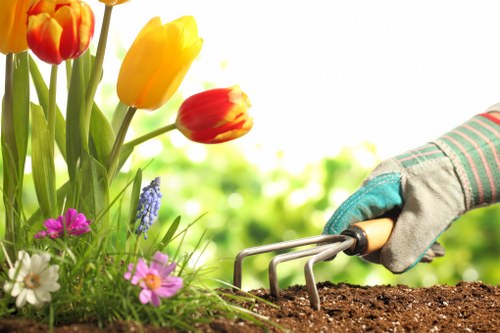
Hardscaping Elements in Landscape Gardening
Incorporating Pathways and Patios
Hardscaping features such as pathways and patios are essential for functionality and aesthetic appeal. They provide structure to the garden, guiding visitors through different areas and creating focal points.
Materials like stone, gravel, and brick are popular choices, each offering a distinct look and feel. Selecting the right material depends on the garden’s overall design theme and the intended use of the space.
Additionally, integrating seating areas and outdoor dining spaces can enhance the garden’s utility, making it a perfect spot for relaxation and entertainment.
- Stone: Timeless and durable
- Gravel: Affordable and versatile
- Brick: Classic and warm
- Concrete: Modern and adaptable
- Wood: Natural and inviting
Water Features and Lighting
Water features like fountains, ponds, and waterfalls add a sense of tranquility and can become the garden’s centerpiece. The sound of running water creates a soothing atmosphere, enhancing the overall ambiance.
Outdoor lighting is another crucial element that extends the garden’s usability into the evening hours. Strategically placed lights can highlight architectural features, illuminate pathways, and create dramatic effects with shadows and reflections.
Solar-powered lights are an eco-friendly option that reduces energy consumption while providing adequate illumination for safety and aesthetics.

Maintenance Tips for Hampstead Gardens
Regular Upkeep and Seasonal Care
Maintaining a beautiful garden requires regular upkeep and attention to seasonal changes. Pruning, weeding, and fertilizing are essential tasks that keep plants healthy and promote vigorous growth.
In spring, focus on planting new annuals and perennials, as well as preparing soil beds for upcoming growth. Summer maintenance includes regular watering and pest control to ensure plants thrive during the warmer months.
Autumn is ideal for leaf cleanup and preparing the garden for winter. Planting hardy shrubs and mulching can protect plants from frost and reduce soil erosion.
- Pruning and trimming
- Weeding and pest control
- Regular watering schedules
- Fertilizing and soil enrichment
- Seasonal plantings and adjustments
Eco-Friendly Gardening Practices
Implementing eco-friendly practices in your garden not only benefits the environment but also promotes a healthier garden ecosystem. Composting kitchen and garden waste reduces landfill contributions and enriches the soil with valuable nutrients.
Using organic fertilizers and natural pest control methods minimizes the use of harmful chemicals, fostering a more sustainable and resilient garden.
Furthermore, conserving water through rainwater harvesting and using drought-resistant plants can significantly reduce your garden’s water footprint.

Enhancing Garden Aesthetics with Furniture and Accessories
Choosing the Right Outdoor Furniture
Outdoor furniture plays a vital role in making your garden a comfortable and inviting space. Selecting pieces that complement the garden’s design theme can enhance its overall aesthetic appeal.
Materials such as wrought iron, teak, and rattan are popular choices due to their durability and classic look. Additionally, weather-resistant cushions and fabrics add comfort and style to seating areas.
Incorporating multifunctional furniture like benches with storage or extendable tables can maximize space utility without compromising on design.
- Durable materials: Wrought iron, teak, rattan
- Comfortable cushions and fabrics
- Multifunctional and space-efficient designs
- Weather-resistant and easy to maintain
- Aesthetic harmony with garden design
Decorative Elements and Personal Touches
Decorative elements such as sculptures, birdbaths, and garden stakes add personality and charm to your garden. These features can serve as focal points or subtle accents, depending on your preference.
Incorporating personal touches like handmade ornaments or sentimental items can make the garden feel uniquely yours, creating a space that reflects your personality and style.
Additionally, using planters and pots in various shapes and sizes can introduce versatility and creativity to your garden layout.

Sustainable Practices in Landscape Gardening
Implementing Sustainable Techniques
Sustainability is increasingly important in landscape gardening. Adopting eco-friendly techniques not only benefits the environment but also contributes to a healthier and more resilient garden.
One effective practice is xeriscaping, which focuses on water conservation through the use of drought-resistant plants and efficient irrigation systems. This approach reduces water usage without compromising on garden beauty.
Additionally, integrating native plants supports local biodiversity and provides habitat for beneficial insects and wildlife, enhancing the garden’s ecological value.
- Xeriscaping for water conservation
- Native plant selection
- Composting and organic gardening
- Rainwater harvesting systems
- Reducing chemical use
Green Technology in Gardening
Incorporating green technology into your garden can further enhance sustainability. Solar-powered garden lights, irrigation systems, and pumps minimize energy consumption while providing necessary functionality.
Smart gardening tools, such as automated watering systems and soil sensors, optimize resource use and reduce manual labor, making gardening more efficient and eco-friendly.
Investing in green technology not only supports environmental goals but also adds a modern touch to your garden design.

Seasonal Garden Planning
Spring: A Time for Renewal
Spring is an ideal time for planting and rejuvenating your garden. Start by clearing any winter debris and preparing soil beds with compost and fertilizers to encourage healthy plant growth.
Introduce a mix of annuals and perennials that bloom in the spring, such as tulips, daffodils, and primroses, to add vibrant colors and fragrances to your garden.
Additionally, early-season planting of shrubs and trees can establish a strong foundation for your garden’s structure, ensuring longevity and resilience.
Summer: Maintaining Vibrancy
During the summer, focus on maintaining your garden’s vibrancy through regular watering and pest management. Deadheading spent blooms encourages continuous flowering and extends the garden’s aesthetic appeal.
Incorporate shade-tolerant plants and mulches to retain soil moisture and protect roots from intense sunlight. Evening watering is recommended to reduce evaporation and ensure deeper hydration.
Hosting garden parties or creating shaded seating areas can enhance the garden’s practicality and enjoyment during the warmer months.

Autumn and Winter Gardening Strategies
Autumn: Preparing for the Cold
Autumn is a critical period for preparing your garden for the winter months. Focus on planting spring bulbs and perennials that will emerge after the frost, ensuring early blooms in the coming year.
Prune overgrown plants and remove any diseased or damaged foliage to promote healthy growth and prevent pest infestations.
Applying a layer of mulch helps insulate the soil, protecting plant roots from freezing temperatures and reducing soil erosion during heavy rains.
Winter: Embracing the Dormant Season
While gardens appear dormant in winter, strategic planning can set the stage for a thriving spring. Use this time to assess the previous year’s garden, noting what worked well and what needs improvement.
Consider sketching new garden layouts or experimenting with container gardening indoors to keep your green thumb active during the colder months.
Additionally, winter is an excellent time for maintenance tasks such as cleaning tools, repairing garden structures, and planning for the next planting season.

Professional Landscape Gardening Services in Hampstead
Benefits of Hiring Experts
Engaging professional landscape gardening services in Hampstead ensures a polished and expertly designed garden. Professionals bring extensive knowledge of local climate, soil conditions, and plant varieties, helping you make informed decisions for your garden’s success.
They can also provide customized design solutions tailored to your specific needs and preferences, creating a unique and functional outdoor space that enhances your property’s value and appeal.
Moreover, professional gardeners offer ongoing maintenance services, ensuring your garden remains pristine and thriving year-round without the stress of managing it yourself.
- Expert design and planning
- Local plant knowledge
- Customized garden solutions
- Ongoing maintenance and care
- Enhanced property value
Choosing the Right Landscaping Company
Selecting a reputable landscaping company is crucial for achieving the best results. Look for companies with a strong portfolio, positive reviews, and a commitment to quality and sustainability.
Ensure the company understands your vision and communicates effectively throughout the project. Transparent pricing and clear agreements prevent misunderstandings and ensure a smooth collaboration.
Additionally, consider companies that prioritize eco-friendly practices and use sustainable materials, aligning your garden with environmental values.

Integrating Wildlife-Friendly Features
Attracting Beneficial Wildlife
Incorporating wildlife-friendly features into your Hampstead garden supports local biodiversity and creates a lively and dynamic ecosystem. Planting a variety of flowering plants, shrubs, and trees provides food and shelter for birds, butterflies, and beneficial insects.
Installing birdhouses, bat boxes, and insect hotels encourages wildlife to inhabit your garden, enhancing its ecological value and creating natural pest control.
Additionally, providing a water source such as a birdbath or small pond attracts a diverse range of species, contributing to the garden’s vibrancy and health.
- Native flowering plants
- Birdhouses and bat boxes
- Insect hotels
- Water sources
- Continuous blooming for year-round interest
Sustainable Pest Management
Emphasizing natural pest management strategies reduces reliance on chemical pesticides, promoting a healthier garden environment. Encourage beneficial insects like ladybugs and bees, which control pests and assist in pollination.
Avoid monocultures by diversifying plant species, which disrupts pest breeding cycles and enhances resilience against infestations.
Implementing physical barriers and companion planting also helps protect plants from common garden pests without harming the ecosystem.

Conclusion: Creating Your Dream Garden in Hampstead
Landscape gardening in Hampstead is an exciting journey that combines creativity, sustainability, and functionality. By understanding the local climate, selecting the right plants, and incorporating thoughtful design elements, you can transform your outdoor space into a serene and beautiful retreat.
Whether you choose to undertake the project yourself or enlist the help of professional gardeners, the key is to plan carefully and consider both aesthetics and practicality. Embrace sustainable practices and wildlife-friendly features to create a garden that not only looks stunning but also contributes positively to the environment.
Ready to transform your garden? Contact us today to begin your landscape gardening journey in Hampstead and create a space that you and your family will cherish for years to come.